Category: HATCH
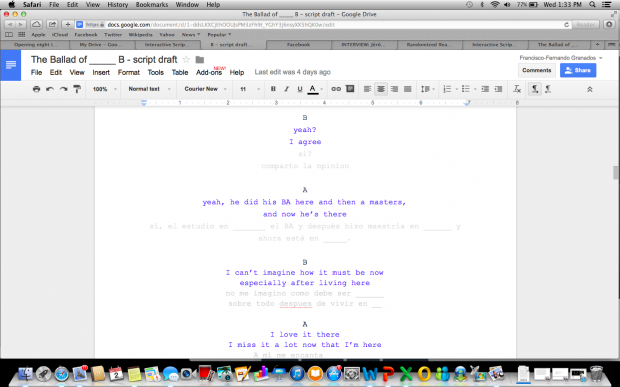
by Francisco-Fernando Granados
In performance art, the time and the place of the creation of the work is always the same as that of the presentation of the work. This characteristic is perhaps what separates performance from any other aesthetic medium: in painting, sculpture, photography, and film, making and showing tend to be spaced by an irreducible difference that puts the making before the showing. No matter how much an artist working on a live piece plans and pre-produces, and as important as that may be, the performance always becomes something, and then becomes something else as it unfolds. Esther Ferrer says it transforms in situ.
A big part of the thrill of working on The Ballad of ______ B for HATCH has been the challenge of creating a work specifically for the stage. One of the goals is to make a work that uses all of the material and conceptual elements of theatre (stage, script, performers, lights) with an attitude of critical respect for the medium that yields something that is decidedly not-a-play. This negativity has to do with an interest in a creating a productive tension between what I hope will be the site-specific approach of the project, and entrenched conventions of the stage as a social (or indeed anti-social) space. Incorporating an interactive element based on the online contributions of the public will be a way to bring together the previously discussed tactics of spacing and redistributing of the elements of theatre.
It is here where the curatorial premise of HATCH, with its focus on social media as a tool for the creation of new performance comes into play. In the recent history of conceptual text-based performance work, my approach owes something to the Fluxus sensibility of Alison Knowles, particularly in her computer-generated poem A House of Dust. The poem was created in 1967 as a collaboration between Knowles, the California-based composer James Tenney, and the Siemens 4004 computer. A House of Dust creates “stanzas by working through iterations of lines with changing words from a finite vocabulary list.” The capacity of computer technology at the time limited the possibilities of electronic interventions into poetic processes to closed systems reminiscent of Modernism. In The Ballad of _____ B, this approach is updated to incorporate a relational element.
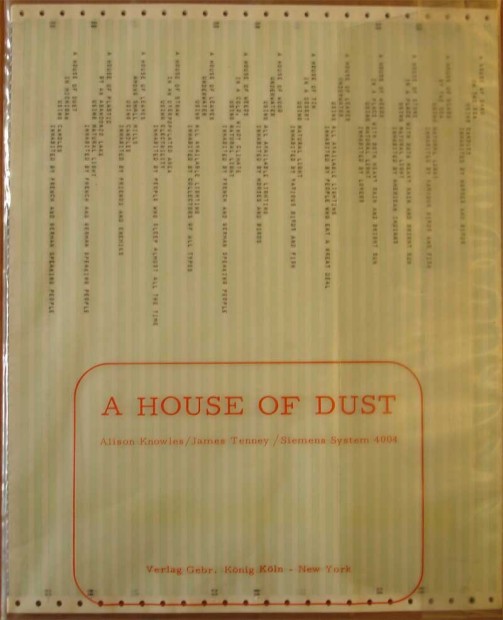
A House of Dust, Alison Knowles and James Tenney (1967)
Social networking platforms will act as randomizing agents, creating interventions in the spaces opened in the text. On April 18th, a significant section of the script will be made available online as a Google Form through a variety of sites including Facebook, Twitter, and the Praxis Theatre site. The fill-in-the blanks approach to the script recalls the aesthetic of vocabulary lessons in ESL language learning. In this case, the didactic form does not follow a function. Audience members are encouraged to fill in the blanks with responses that may range from the obvious to the non-sensical. The accumulation of these results will be used during the week of the residency to re-shape the script.
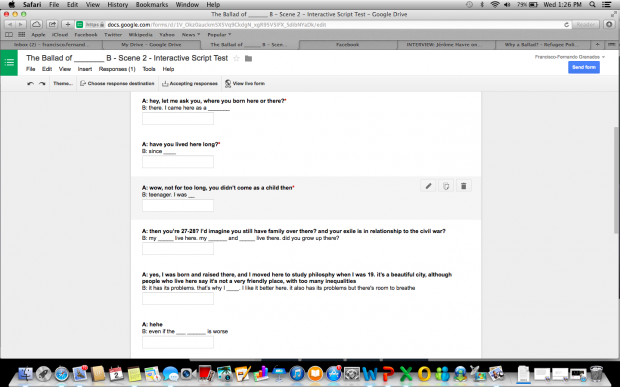
A prototype for the form is available now as a test. Click here to access section of the script and fill in the blanks.
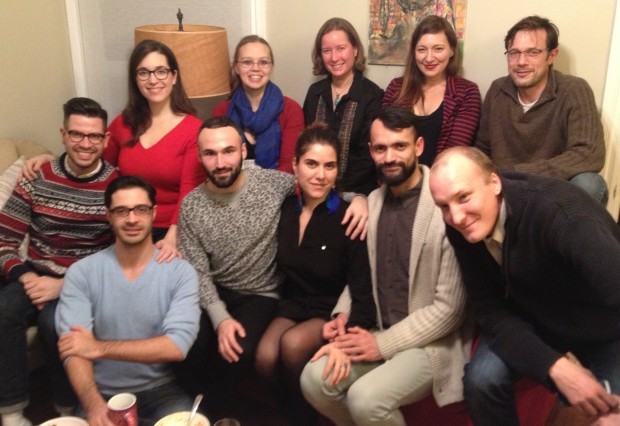
HATCH artistic teams, Harbourfront Centre Communications staff and us, getting together for a little pre-season potluck
As we announced earlier this year, Praxis Theatre is guest-curating Harbourfront Centre’s 2014 HATCH season of new performance experiments. As curators, we were particularly interested in looking at projects that would include experiments in how social media can be included in the development and/or performance of new works.
We’re very happy to say that we have selected our artists for 2014, and while Harbourfront Centre will be launching an awesome new web portal for these artists and their work at HATCH in January 2014, we’re providing you with a sneak peek today of who they are and what they’ll be working on over the next 5 months.
We invite you to take a look, and even engage with their projects online as they develop.
Week #1:
#legacy – Rob Kempson – Core Artist
Why do we yearn to leave a legacy behind? #legacy features Twitter and three women over the age of 65 who are looking to make the most of it.
This interactive performance project brings three women over the age of 65 up-close and personal with social media in general–and the Twitterverse in particular–in order to consider how we might leave a lasting impression—and how it should be hashtagged.
Follow the ladies on Twitter:
@judith_dove
@Joan_Belford2
@McCroq
Week #2:
BroadFish – Melissa D’Agostino – Core Artist
What happens when the promise of a perfect future hangs on the one thing out of your grasp?
BroadFish is a live theatre experiment by acclaimed performer Melissa D’Agostino that integrates folktales, music, improvisation, and motion pictures to explore the thin line between reality and fantasy, relationships and romance, and the power of myth in our everyday lives. By plunging into the wild world of female stereotypes, BroadFish considers traditional attitudes toward relationships, happiness, and romance, investigating how they’ve evolved and degenerated through the Internet, social media, and digital technology.
Week #3:
The Ballad of _______ B – Francisco-Fernando Granados – Core Artist
The Ballad of _______ B brings together a young refugee’s obsession with opera diva Maria Callas and the queerness of the imagination to centre stage.
The performance is conceived as a character study of _______ B, a once “clean-cut, fresh-faced 18-year-old” refugee whose story appears as a vocabulary lesson in the pages of an instructional ESL book. This work marks a radical departure for artist Francisco-Fernando Granados, from action-based, conceptual approaches to experimental explorations that incorporate digital media, narrative, and recitation.
Week #4:
Faster than Night – Digital BlackBox: Vanessa Shaver, Pascal Langdale, Alison Humphrey – Core Artists
Social media billionaire Caleb Smith is on a mission. Racing against a terrible terminal illness, he is embarking on a deep space voyage with the secret goal of cheating time and death. But when something goes horribly wrong, can you help make a gut-wrenching life-or-death decision?
Newly formed Digital BlackBox blends live performance with real-time 3D animation and audience interaction to hone a new approach to storytelling, the first of its kind in the world. The company includes RADA-trained actor, writer, and performance-capture specialist Pascal Langdale; writer, director, and 2009 Elliot Hayes Award-Winner Alison Humphrey; creative producer Vanessa Shaver; and executive producer Jo Singh Brar.
Interview by Ryan Quinn
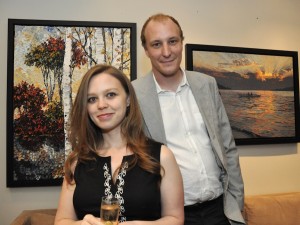 R: I’m here with Michael Wheeler and Aislinn Rose ofPraxis Theatre who are co-curating the HATCH program at the Harbourfront Center in 2014. Can you tell me a bit about the HATCH program?
R: I’m here with Michael Wheeler and Aislinn Rose ofPraxis Theatre who are co-curating the HATCH program at the Harbourfront Center in 2014. Can you tell me a bit about the HATCH program?
A: The HATCH program is through the Harbourfront Center. We took part in it in 2010, and it was a really transformative period for Praxis theatre because it was really our first foray into integrating our online activities with our artmaking activities. That’s why we’re looking at projects for this year’s submissions that are going to be working on some of the same things: incorporating social media into either the communication about the project, integration into the actual creation of the project, or use of social media in the performance of the work. So, essentially what the program is, is an opportunity for a company, or a collective, or an artist to work on a particular aspect of a project that requires a space to experiment in. You get a week’s residency in the Harbourfront’s studio theatre. You really do have the use of that space for the whole week to work on something you couldn’t do in a rehearsal room, or someone’s back yard, or your own apartment. So, for our project, we worked on a piece called Section 98.
M: That was very concise. The only thing I would add to that as to core elements of the residency is that your one week of residency at the Harbourfront studio theatre has to end with some sort of public presentation. However, I think we’re adamant that it’s not about presenting a final work. Hopefully, people are experimenting throughout the week, then that presentation is more a revelation of what that week’s experiment was rather than “here’s our play”. A couple other things that come along with the residency are, firstly, a lot of support from the Harbourfront center that you wouldn’t necessarily get if you were producing your own show, you get marketing support, mentorship, publicity. So, a lot of things that if you were producing yourself, you’d have to come up with the cash for.

Click here to read the rest of the interview on inthegreenroom.ca

Winterreise Projekt–Winterreise Collective (HATCH 2013)
Tune in @ 2pm today via #HatchTO to participate in a Live Twitter Chat about Hatch 2013.
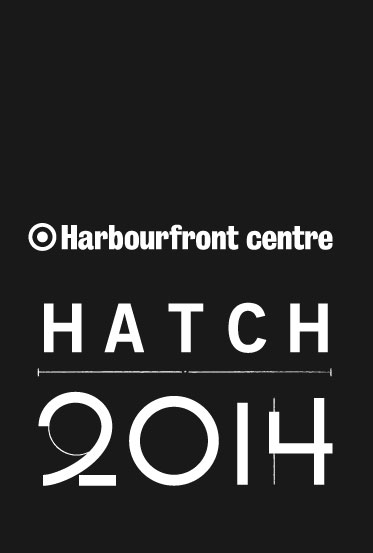
 With the deadline for HATCH 2014 applications coming up on July 12, Praxis and Harbourfront Centre will be hosting a live twitter chat to discuss the HATCH program this year, how work can integrate with social media (which is something we are specifically looking for) and also to field any questions that might be out there.
With the deadline for HATCH 2014 applications coming up on July 12, Praxis and Harbourfront Centre will be hosting a live twitter chat to discuss the HATCH program this year, how work can integrate with social media (which is something we are specifically looking for) and also to field any questions that might be out there.
Praxis started incorporating an open source theatre approach as part of our HATCH residency in 2010, and we hope to add a little of this to how we curate as well. What are you thinking? What are we thinking? Let’s put it all our there and see what’s going on.
On Tuesday we will have a livestream of all the tweets using the hashtag #HatchTO here on praxistheatre.com.
See you back here after the long weekend. Happy Canada Day!
— World Stage (@WorldStageTO)
June 28, 2013
Good news praxistheatre.com readers:
 Praxis Theatre is guest curating the 10th anniversary HATCH Season in 2014. We are very excited about this partnership. The experience Praxis Theatre had at HATCH creating Section 98 in 2010 was integral to our development as a multi-platform performance creator.
Praxis Theatre is guest curating the 10th anniversary HATCH Season in 2014. We are very excited about this partnership. The experience Praxis Theatre had at HATCH creating Section 98 in 2010 was integral to our development as a multi-platform performance creator.
HATCH is designed to incubate and foster invention and innovation in performance practice and over the past decade has become a vital laboratory for development within the local performance ecology. The opportunity to work and experiment with support and resources from Harbourfront is a significant one.
For a decade, HATCH has empowered many of Toronto artists to push the boundaries of contemporary performance including: Erin Shields, Anita Majumdar, Joan Kivanda, Brendan Healy, Hannah Moscovitch, Small Wooden Shoe, Trevor Schwellnus, Jordan Tannahill, Jess Dobkin, Philip McKee, UnSpun Theatre, Reena Katz, and Derek Kwan.
For HATCH 2014, we are particularly interested in projects that experiment with how social media can be used artistically in creation and performance. The deadline for applications is July 12, 2013.

Ame Henderson and Evan Webber in Dedicated to The Revolutions (HATCH 07)
We invite projects from emerging creators as well as established artists engaging in new collaborations or entering into new artistic territory. Performance proposals from artists working across all disciplines, including, but not limited to: dance, theatre, performance art, music, digital art, etc. are encouraged. Of specific interest are proposals that demonstrate how HATCH will benefit the development of the project and the artist.
In addition to providing mentorship over the course of a year, HATCH enables the concentrated experimentation and incubation of an idea that culminates in a public presentation, recognizing how vital audience feedback is to the creative process. Companies and artists selected to participate in HATCH will receive a one-week residency in the Studio Theatre, located at Harbourfront Centre.
The Studio Theatre is an intimate, 192-seat proscenium venue featuring a full lighting grid, raked seating and sprung stage floor. Use of the residency period is at the discretion of the artist and needs of the project (i.e. workshop, rehearsals, performance, etc.) but there must be at least one presentation of the work for the public at some point in the week.
Deadline for Submissions: July 12/2013

Mrtvolka – Daniela Sneppova and Penn Kemp (HATCH 2011)
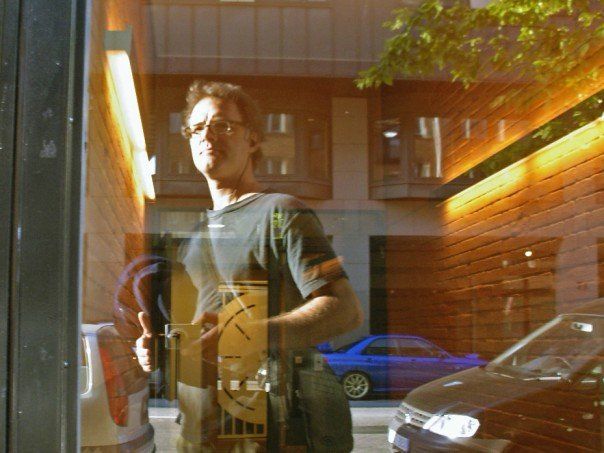
HATCH 2013 Guest Curator Trevor Schwellnus
The HATCH performing arts residency at Harbourfront Centre is going into its 9th year as a program designed to incubate and foster invention and innovation in the local performance scene for Toronto artists in theatre, music, dance and performance. It culminates in a week in the Studio Theatre with one public presentation of the work in progress.
Trevor Schwellnus is the Guest Curator for the 2013 season. He recently spoke with HATCH coordinator (and frequent Praxis collaborator) Margaret Evans about the program and the call for submissions, due Wednesday June 20, 2102.
HATCH submissions are due in 5 days- What advice do you have for those applying?
On an artistic level: Be honest and be curious. If you’re doing it for the art, you have your way in. For this stuff, it’s all about knowing what interests you and having an idea that you want to play with. I feel that HATCH offers two things at once: a chance to move a project forward, and a chance to give an artist breathing room / an incentive to develop their own practice. So my advice is: know what you need to work next, and use that as the basis of your proposal.
On a practical level: You will want to apply for a development grant (or three) this summer to pay yourself and your collaborators. This application is a great first step in getting your plan together – budgets, schedules, and how you think you might use your time – for the bigger applications. Think about moving the whole thing, and how this is a step on the way. Use the deadline as motivation. Also: talk to your collaborators right away! You don’t have to make big promises to anyone – we all know that an application is just an application, and next April things might have changed – but invite them to the table now to get your dream team in the application.
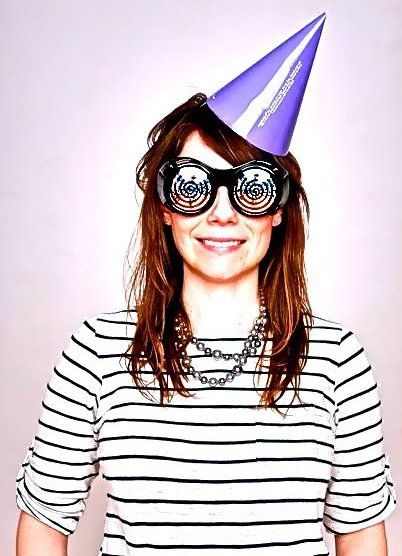
HATCH Coordinator Margaret Evans
What was your first HATCH project and how did you learn about the program?
My first encounter with HATCH project was the first project in the program, Matt MacFadzean’s richardthesecond. Things were pretty open back then, and at the time HATCH (whatever the intentions were for the program) worked as a kind of opportunity for indie companies to mount their stuff for a week. I was TD for that show, and we were developing it as a possible piece for touring to schools
You might hold the record for participation in HATCH projects, I’ve also seen you in the audience for many others. How do you feel the program has evolved?
I think the indie participants quickly learned that a week isn’t a lot of time to put up and mount a work in progress, so the “road house” aspect of HATCH was less useful to a young company than the opportunity to work out issues with the tech support. So companies started coming in with proposals that were in development, and tended to present a single showing at the end.
It feels like a very natural evolution: the stress of tech and presentation doesn’t really allow you, in a week, to do anything exploratory – there isn’t much room to push limits and test things in a week if you are trying to sell a bunch of shows that week as well. It really came through for me that way the year Laura Nanni took on the curator’s job – she made that approach much more the focus of the program, allowing the artists involved to take real risks, and I think that’s when it took on a new life.
What do you think you will bring to the role of guest curator?
I like to think I bring a good sense of what it means to work collaboratively on stage, an eagerness to see what other people can do with it, how they reflect the world back to us through new media and much older practices. And on a practical level, an appreciation of the resources and ambitions of independent performance-makers who have to produce their own work.
Can someone put a HATCH application together in 5 days?
For sure – the key to any proposal is the strength of the idea that an artist is interested in, and having a sense of how to make it happen. Don’t bullshit – if you feel you’re saying things for effect, or saying the same thing over and over in your application, you might need more time to clarify your ideas.
But I find that putting an application together is actually the first step in making your project happen – otherwise it’s just a bunch of ideas that live in your head until you forget about them. Which sucks. So if you have a thought, put it down, get it out. Even if you don’t get into HATCH, you’ve started something.
For more information on the HATCH performing arts residency at Harbourfront Centre, visit this link, email hatch@harbourfrontcentre.com or call 416-973-4237.














Recent Comments